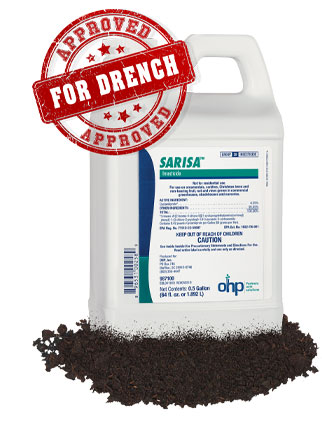Plantpeddler’s Poinsettia Playbook: From Trials to Timely Delivery
January 24, 2025
The poinsettia season may unfold in the final months of the year, yet it’s often a year-round planning process for growers of any size.
At Plantpeddler in Cresco, Iowa, the work begins long before the holiday rush.
In fact, the team invests months in varietal trials, capacity mapping, and perfecting greenhouse routines to ship a reliable, eye-catching crop on time. Some of the most important lessons learned during poinsettia production can improve workflow across the greenhouse, all year long.
Plan Ahead with the Market in Mind
Poinsettias are unique among seasonal crops because they can occupy greenhouse space for up to six or seven months, much longer than, say, geraniums.
According to Plantpeddler’s general manager Jason Sbiral, poinsettia rooting begins with pretty good numbers in May. Continuing through June and July, he and his team oversee production of the poinsettia liners. All told, Plantpeddler will root several million poinsettias for shipment to greenhouses across the US. Plantpeddler also grows out over 136,000 poinsettias for wholesale sales as pre-finished and finished, to growers and retailers, for holiday sales.
This long lead-up means Plantpeddler needs to forecast capacity and labor demands well before the busy fourth quarter.
One way that Plantpeddler navigated the question of capacity in 2024 was to develop a system on their Metazet FormFlex equipment to produce some eight-inch poinsettias in the air. This added another few thousand plants on top of typical production numbers across both greenhouse locations.
“Most of us have basket capacity overhead, but only produce with it during the spring cycle, though we use ours for some fall production, as well,” John Gooder, COO, says. “So, we’re looking at ways to create an income stream off of that infrastructure that’s already in place.”
Variety Selection and the Influence of Trials
Plantpeddler hosts a comprehensive Poinsettia Trial each year, evaluating more than 200 varieties from around the world. (The company’s 2025 Poinsettia Variety Day will take place Dec. 4, so mark your calendar now.)
This is a major event, international in scope, that draws breeders and growers from around the world to Iowa at the height of poinsettia season. The benefit for the Gooders and their team is that they get a front-row seat to the finest genetics emerging in the marketplace.
This trial environment allows the team to identify high-performing varieties for greenhouse performance, retail shelf life, and post-harvest longevity. Selections prioritize branching, bract color, Cyathia, and ease of production; important factors for a fragile crop that sees heavy handling during shipping.
Painted and Specialty Poinsettias
Perhaps Plantpeddler’s most notable differentiator is that 60% of its poinsettias are upgraded with paint and other “bling.” “That’s paint, glitter, shimmers, specialty treatments. All hand-painted,” Mike Gooder, president, says.
Painting introduces a host of considerations regarding bract shape and color, and thus the team seeks varieties that can withstand those meticulous hand-crafted touches during production.
“A variety might be terrific in the standard sales,” Sbiral says, “but as soon as you paint it, maybe it has some complications. We’re actually not just choosing for a great looking plant, we’re choosing for a plant that looks good, but also accepts paint.”
Those production dynamics are at play along each step of the variety selection process.
The commodity poinsettia market, largely driven by retailers’ expectations for traditional colors (primarily red, with some white and pink), remains strong. So, a high-quality, multi-bract plant is essential. In the grocery and traditional retail sector, a “premium” poinsettia typically means at least five good-sized bracts on a 6.5-inch pot. The industry standard provides a benchmark: If a variety produces many small bracts, it sacrifices bloom size; conversely, fewer bracts may yield larger individual blooms.
Balancing branch count and bract size is critical to meeting retailer expectations without compromising overall plant quality.
However, Plantpeddler and its retail base increasingly see strong potential in specialty poinsettias—new varieties, painted options, and unique forms—that can create market differentiation and wider consumer appeal. By offering both standard colors and innovative novelty programs, growers can increase retail interest and educate consumers on the broader possibilities of poinsettias.
Growers have an opportunity to move beyond commodity red poinsettias and explore distinctive varieties and treatments that ultimately expand the marketplace–and that work begins in proper variety selection.
By developing a clear process—and choosing genetics that can handle the extra work—Plantpeddler expands retail demand beyond classic red, white, and pink poinsettias.
Greenhouse Management: From Start to Finish
Uniformity is a key concept repeated by the team.
In fact, in poinsettias, uniformity is the guiding principle.
“If you have unevenness in your young plant going into poinsettia production, your chances of coming out on the backside with a quality crop are really low,” John says. “It’s those first two weeks of poinsettia establishment that really make or break the crop.”
To push early growth without overextending plants, Sbiral pulls multiple levers in his control: “You feed and give ample amounts of nutrition and water but also manipulate the plants with temperature–like a growth regulator situation”.
Plantpeddler has also shifted toward biorational tools for both pest management and root health.
“We’ve gone a lot more toward biorationals, even bio-pesticide,” Sbiral says. “We’re not 100% bio for pest control, but many of our customers are. So I am conscientious about products that will be compatible. With their bio programs.”
Lessons Learned and Adaptability
Because poinsettias are so tightly tied to holiday sales, on-time delivery is essential. With modern genetics and good production practices, during the season, there is minimal cherry-picking and downgrades.
“You can tell if you’re in good poinsettia season because the team is pulling poinsettias by the bench,” Mike says.
Even with careful planning, the grower must adapt to weather swings and cultural nuances.
“We had a really great poinsettia year in 2024,” Sbiral says. “But next year, I could do everything the same as I did this year and have a completely different outcome. The key is to observe the plants and be fluid. Make changes on the fly.”
His point underscores the reality of horticulture: Fine-tuned methods must still bend to unforeseen conditions.
Conclusion
Whether producing thousands of painted poinsettias or sticking to the commodity side of the market, poinsettias demand skilled planning and execution.
By conducting detailed variety trials, refining greenhouse protocols, and tapping into unique value-added offerings, Plantpeddler demonstrates how specialization can pay off in the busy holiday season.
As Mike says, “Poinsettias are like a one-shot crop. Without a strong beginning, it’s very difficult to finish well.”
A strong foundation and the willingness to innovate are at the heart of Plantpeddler’s approach—keys any greenhouse or nursery grower might keep in mind, poinsettia season or not.
Sarisa Insecticide now registered for drench applications
November 7, 2024
OHP is excited to announce the addition of a drench label with our popular Sarisa™ Insecticide, offering growers greater flexibility and application techniques to control a wide range of insect pests.
and application techniques to control a wide range of insect pests.
Sarisa’s new drench* label allows the active ingredient, cyclaniliprole, to target immature (larvae/pupa) life stage protection against key nursery and greenhouse pests such as thrips, red headed flea beetles and Japanese beetles among many others.
A diamide insecticide, the new Sarisa drench label registration also includes use on vegetables, specifically peppers and tomatoes, again providing growers with a well-rounded insecticide for their ornamental and vegetable crops.
“Sarisa continues to provide growers with an outstanding broad-spectrum insect solution for both our nursery and greenhouse grower customers. This drench label addition will be welcomed by many of our growers.” says Duffey Clark, OHP Vice President of Commercial Operations.
A diamide insecticide, Sarisa provides quick knockdown and residual activity of piercing, sucking and chewing insects with its novel mode of action. Sarisa has a 4-hour Restricted Entry Interval (REI).
Sarisa is formulated as a user-friendly soluble concentrate that may be tank mixed with appropriate partners. The use of a spreader sticker may help performance. Please refer to the label for specific recommendations.
*Drench label not yet registered in CA & OR.
Duffey Clark promoted to VP, Commercial Operations
August 27, 2024
OHP, Inc., (“OHP”), an American Vanguard Company (NYSE: AVD), is pleased to announce the promotion of Duffey Clark to the position of Vice President, Commercial Operations, of OHP® Inc., a leading provider of technology-based solutions for greenhouse and nursery production applications.
Operations, of OHP® Inc., a leading provider of technology-based solutions for greenhouse and nursery production applications.
In this role Clark will lead OHP’s sales, marketing, and key account efforts in the ornamental, nursery, and greenhouse markets. He also will serve as a member of AMGUARD’s leadership team and will report to AMGUARD CEO Shayne M. Wetherall.
Duffey originally joined OHP as a Technical Support Manager in 2023, then was rapidly promoted to become OHP’s first Key Account Manager the same year. Prior to OHP, he held numerous leadership positions during a 20-year stint at Griffin Greenhouse Supplies, a longstanding distributor of OHP products. Additionally he served as a board member of Prokoz, which has a network of 26 turf and ornamental owner distributors.
“Duffey’s extensive market, commercial, and industry experience align perfectly with OHP’s expansion into growing CEA markets and our overarching commitment to bringing new technology innovations to market,” said Wetherall. “His strong industry reputation and leadership experience will be a valuable addition to OHP, AMGUARD, and its growing customer base.”
OHP adds Technical Sales Manager in Western U.S.
January 4, 2024
OHP, Inc., (“OHP”), an American Vanguard Company (NYSE: AVD), is pleased to announce the addition of Matt Brecht, Ph.D., to its team of horticultural professionals as Technical Sales Manager in the Western U.S.
professionals as Technical Sales Manager in the Western U.S.
Matt brings a range of professional experience to the OHP team, most recently with Certis Biologicals as Key Account Manager for Organic Pesticide Products in the Controlled Environmental Agriculture (CEA) markets. While at Certis, Matt supported both BotaniGard® and Mycotrol® Mycoinsecticides, two best-in-class products that OHP has recently added to its stable of pest control solutions.
Prior to Certis, Matt served as key account manager for Marrone Bio Innovations, supporting several key biopesticides in the U.S. and Canadian greenhouse vegetable, ornamental, and cannabis markets. He also has vast experience in training, public speaking, video production, and other communication areas.
“We are excited to add Matt as a key contributor in our efforts to promote our traditional products and BioSolutions® to the ornamental and CEA markets,” says Ron Ostrander, OHP VP of Commercial Operations.
“Growing our BioSolutions segment is critical for OHP and Matt will help tremendously, having experience in that space the last several years,” adds Ostrander. “It’s a natural fit. Matt has the market knowledge and product experience to support and grow market acceptance for all OHP products, including our new additions BotaniGard and Mycotrol.”
In addition to his biopesticide sales and tech support experience, he was founder and president of Dutch Valley Farms, a cannabis growing operation in Western Oregon. He also served as a territory sales manager for 11 years with Syngenta Lawn and Garden.
Matt holds both a Ph.D. in plant pathology and a Master of Science degree in plant pathology from the University of Florida.
OHP® to distribute Certis® Biological products in U.S. non-crop markets
November 15, 2023
Certis and OHP are pleased to announce an expansion of our collaborative relationship in U.S. non-crop markets. Under the new agreement, OHP will be the exclusive Master Distributor of BotaniGard and Mycotrol Mycoinsecticides and will continue to support other Certis technologies in the OHP Biosolutions portfolio including Azatin® O Biological Insecticide, Triact® 70 Fungicide Insecticide Miticide, Ancora® Microbial Insecticide, and Triathlon® BA Biofungicide/Bactericide.
This collaboration enables Certis to continue to focus on the development of new technology solutions for US Ornamental and CEA markets while leveraging OHP’s strong commercial and technical capabilities. In the last few years OHP has added personnel with experience in Controlled Environmental Agriculture (CEA) markets and is further equipped to support BotaniGard, Mycotrol, and other Certis-sourced biopesticides.
Programming and pricing information about the additions to the OHP product line will be forthcoming in the very near future. In the meantime, please direct any questions to OHP Vice President of Commercial Operations Ron Ostrander or Certis Global VP Marketing Chris Judd. We thank you for your continued business.
Sincerely,
Amy O’Shea, President & CEO, Certis Biologicals
Shayne M. Wetherall, CEO, OHP